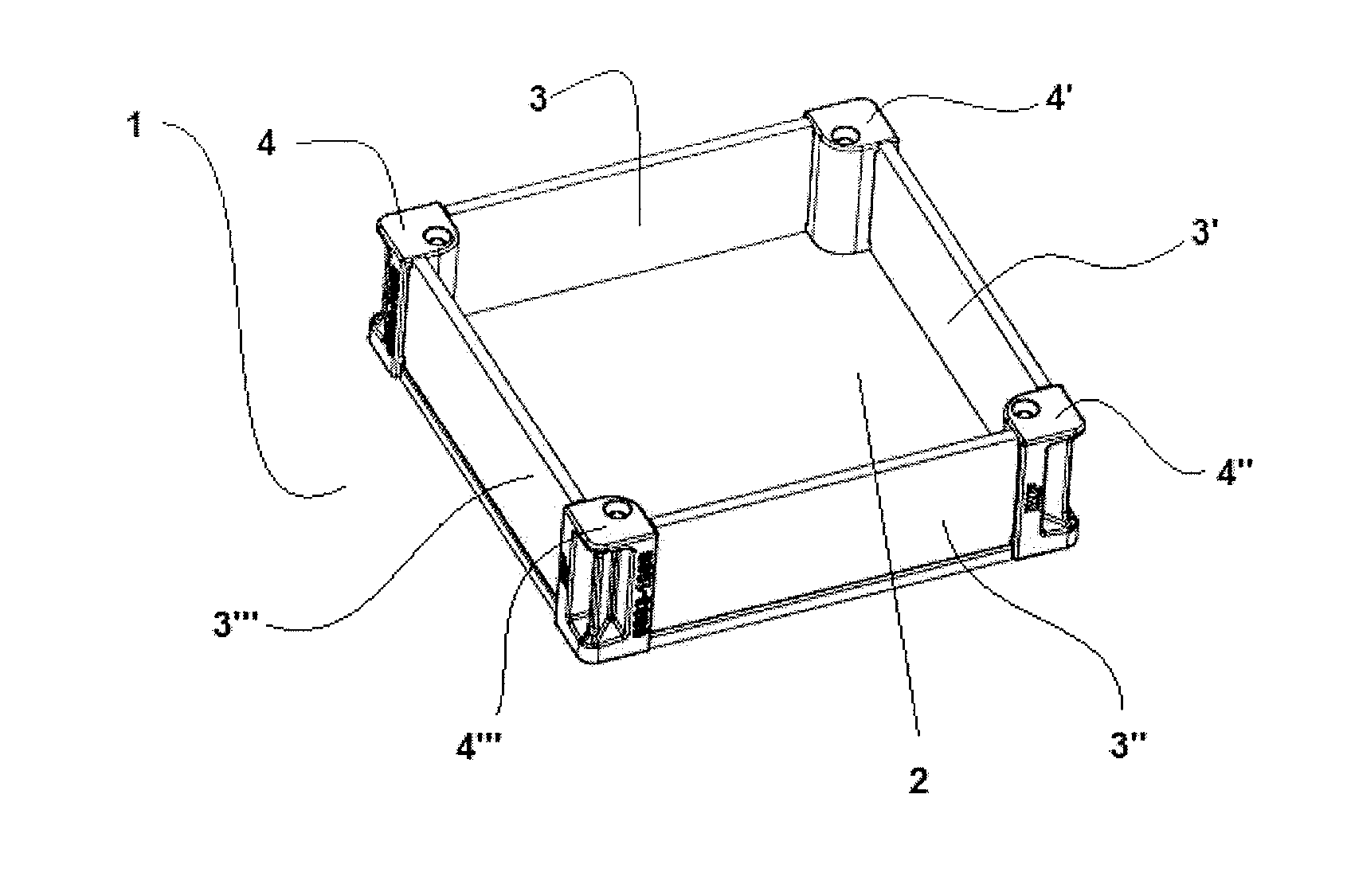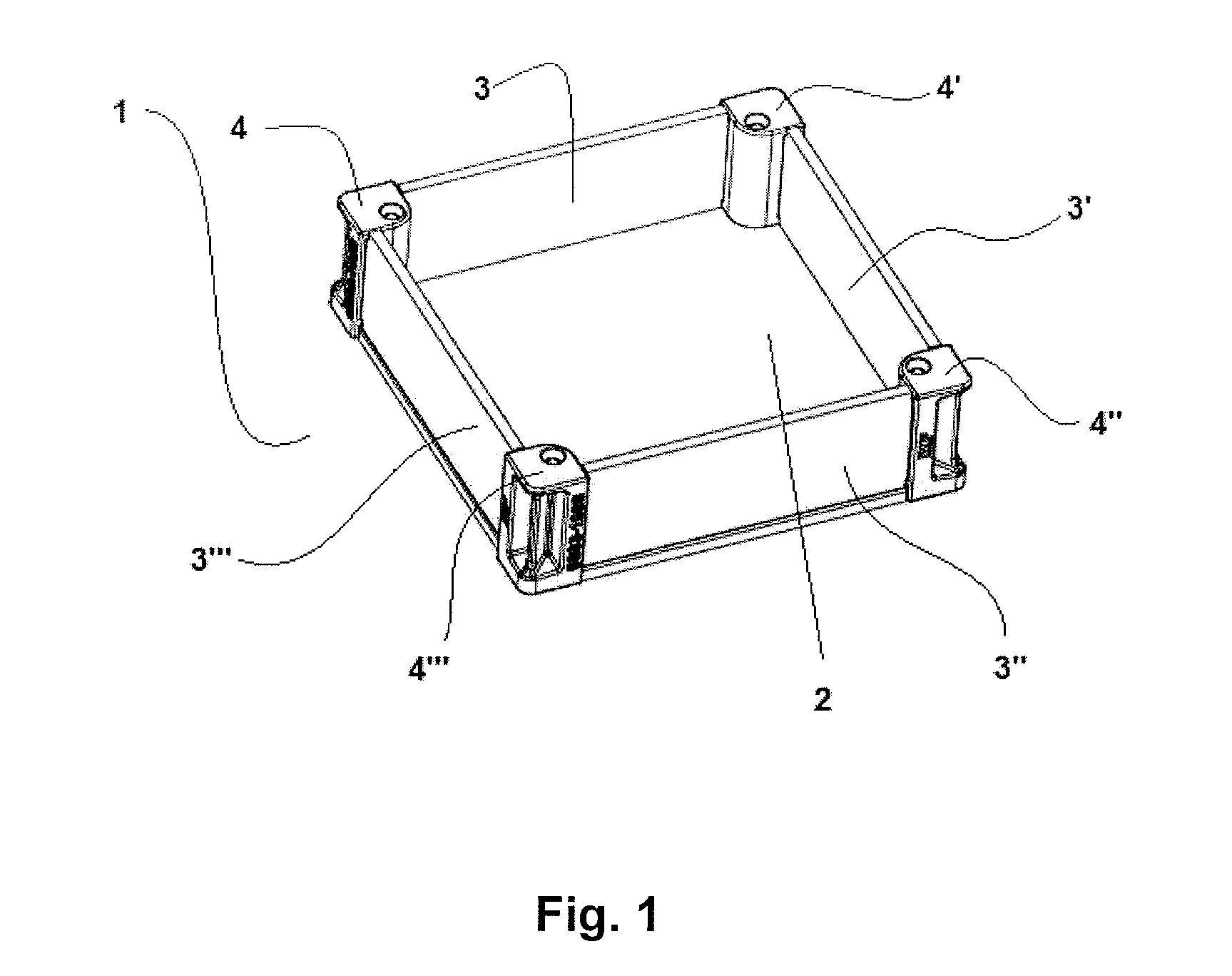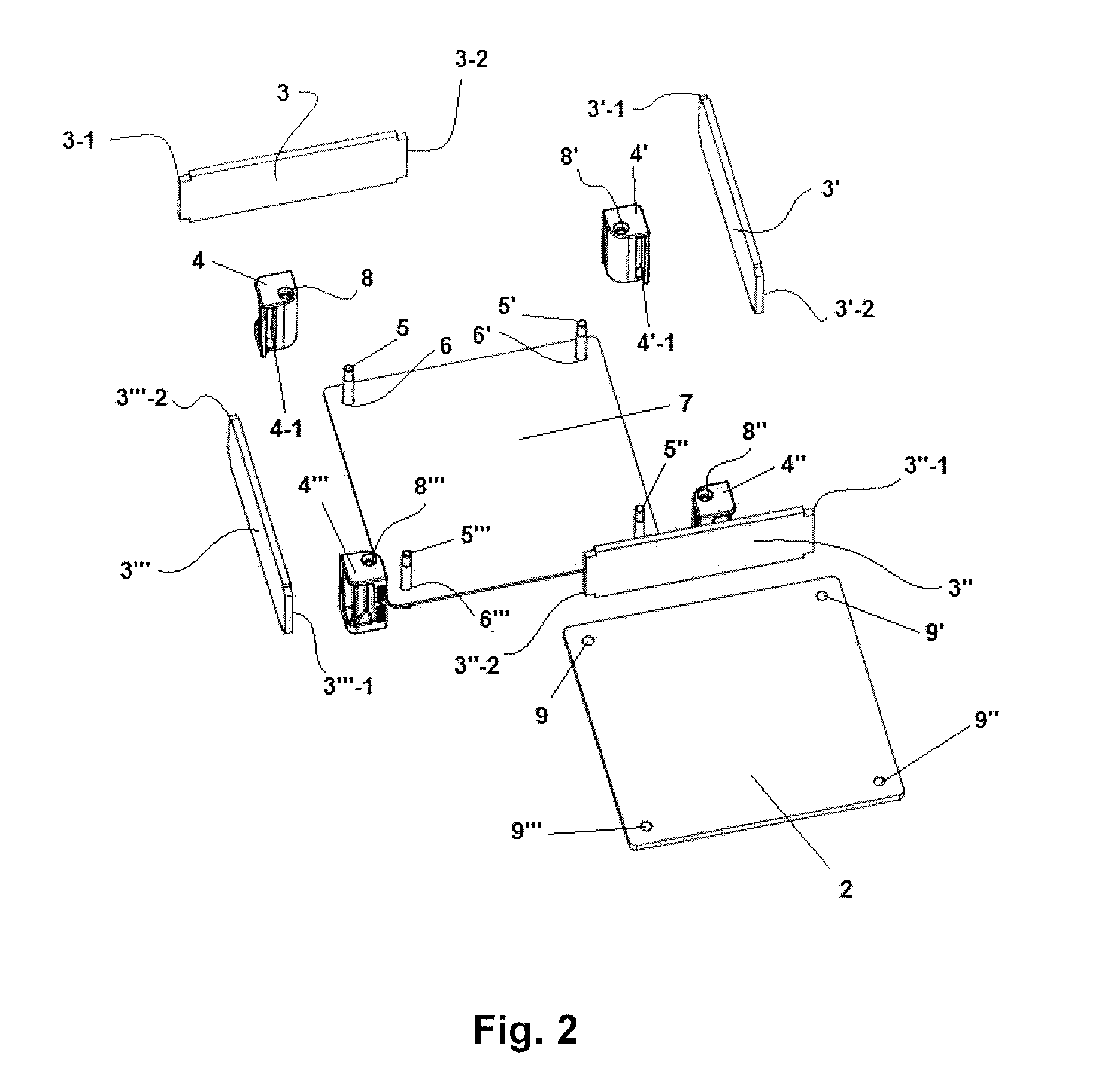Saggar assembly
a technology for saggars and parts, applied in the direction of furnace components, lighting and heating apparatus, furnaces, etc., can solve the problems of difficult stacking, saggars may even break, and are not economically feasible to repair such saggars
- Summary
- Abstract
- Description
- Claims
- Application Information
AI Technical Summary
Benefits of technology
Problems solved by technology
Method used
Image
Examples
Embodiment Construction
[0034]FIG. 1 shows a saggar 1 in an assembled state, as obtained from an assembly according to the present invention. There is a first base element 2 facing the inside of the box-shaped saggar 1. Four side elements 3, 3′, 3″, 3′″ are secured to the first base element 2 using four corner elements 4, 4′, 4″, 4′″. An optional second base element and screws cannot be seen in this perspective in the assembled state.
[0035]FIG. 2 shows all the elements of an assembly according to the present invention in a view intended to show one way of assembling the elements of the assembly in order to form a box-shaped saggar 1. Fasteners 5, 5′, 5″, 5′″ have been inserted into holes 6, 6′, 6′″ located in the vicinity of the corners of the optional second base element 7. The first base element 2, side elements 3, 3′, 3″, 3′″ and corner elements 4, 4′, 4″, 4′″ are also shown. The side elements 3, 3′, 3″, 3′″ each comprise rectangular extensions 3-1, 3-2, 3′-1, 3′-2, 3″-1, 3″-2, 3′″-1, 3′″-2, at each of ...
PUM
 Login to View More
Login to View More Abstract
Description
Claims
Application Information
 Login to View More
Login to View More - R&D
- Intellectual Property
- Life Sciences
- Materials
- Tech Scout
- Unparalleled Data Quality
- Higher Quality Content
- 60% Fewer Hallucinations
Browse by: Latest US Patents, China's latest patents, Technical Efficacy Thesaurus, Application Domain, Technology Topic, Popular Technical Reports.
© 2025 PatSnap. All rights reserved.Legal|Privacy policy|Modern Slavery Act Transparency Statement|Sitemap|About US| Contact US: help@patsnap.com



